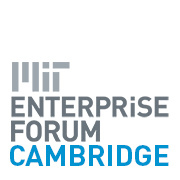Resiliency with Microgrids: A Peek Inside


A microgrid is an electrical distribution network with underground wires that serves two or more buildings in a local area. Microgrids can enter ‘island mode’ and separate from the larger electrical grid when there is a major outage - self supplying with locally generated energy.
A string of extreme weather events - think Hurricane Sandy’s impact on New York and New Jersey and Hurricane Maria’s devastating impact on Puerto Rico - have highlighted the need to create a more resilient power grid. Microgrids that use on-site renewables and energy storage support resiliency while being clean and green. Communities are looking to microgrids to keep critical services going during power outages. Companies are looking to microgrids to avoid costly power outages and reduce costs through demand-side efficiencies. Microgrids help facilities earn money through participation in demand response programs and, in the future, by providing services to the grid.
There are opportunities for startups in this market to offer microgrids and their components, like battery storage, fuel cells and controllers. Last September, New York’s Urban Future Lab announced $50,000 awards plus incubation guidance for microgrid startups. An Indiana startup built their business providing microgrids to the military and is moving on to build a commercial resilience business. Plus, peer to peer power exchanges using blockchain are popping up in conjunction with microgrids.
After experiencing outages, Schneider Electric decided to “be their own customer” and install a microgrid at their North American headquarters in Andover, MA. 440kW of power is provided by solar arrays backed up with a 400kW natural gas generator. The system provides 500kW of capacity and 1MWhr of energy. An advanced cloud-based energy management system combined with an energy control center orchestrates supply and demand and enables the microgrid to safely island. What is unique about this microgrid is that it is built using an Energy as a Service business model – a third-party investor owns the microgrid assets, so there is no capital outlay. Costs associated with the maintenance and operation are eliminated. Energy-as-a service provides more predictable energy costs, increased sustainability and robust resilience for Schneider Electric’s Boston One Campus.
Join us as we peek inside to see how this works first hand! You will get a chance to tour the facilities, and learn about the potential of microgrid technology, innovative business models and creative partnerships
Time: 4:00 PM to 6:00 PM
Agenda:
Meet at: 800 Federal Street, Andover MA 01810